Getting passengers back on-board: Ireland’s National Transport Authority’s road to recovery
- Like
- Digg
- Del
- Tumblr
- VKontakte
- Buffer
- Love This
- Odnoklassniki
- Meneame
- Blogger
- Amazon
- Yahoo Mail
- Gmail
- AOL
- Newsvine
- HackerNews
- Evernote
- MySpace
- Mail.ru
- Viadeo
- Line
- Comments
- Yummly
- SMS
- Viber
- Telegram
- Subscribe
- Skype
- Facebook Messenger
- Kakao
- LiveJournal
- Yammer
- Edgar
- Fintel
- Mix
- Instapaper
- Copy Link
Posted: 28 November 2022 | Anne Graham - National Transport Authority | No comments yet
For the latest instalment of Intelligent Transport’s exclusive COVID-19 recovery series, Anne Graham, CEO of Ireland’s National Transport Authority, discusses how investing in service level enhancements and improving value for money on public transport fares has helped to increase the authority’s passenger numbers post-pandemic, as well as why it is so important to get that balance right.
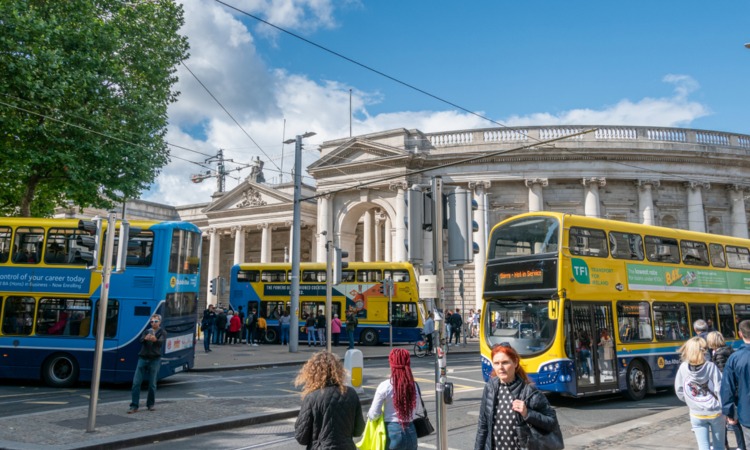

The onset of the global COVID-19 pandemic in March 2020 had a significant impact on the use of public transport across all modes in Ireland. In the early weeks of the pandemic, passenger numbers on subsidised public service obligation (PSO) services initially fell to between 10 to 20 per cent of previous levels. This was as a result of that dramatic drop in the demand arising from COVID-19 restrictions, a reduction in capacity on public transport vehicles and, in some instances, reductions in service levels.
Recovery has not been linear, and sometimes it seemed as if we were taking one step forward and two steps back, but the sector demonstrated just how resilient it was as it faced one COVID-19 challenge after another”
Almost three years on, we are in a very different space, where we are now seeing a remarkable recovery in Ireland’s public transport sector. The recovery has not been linear, and sometimes it seemed as if we were taking one step forward and two steps back, but the sector demonstrated just how resilient it was as it faced one COVID-19 challenge after another.
There is no doubt that patterns of use on public transport in Ireland have changed since March 2020 and, while inter-peak and weekend customer numbers are now, in many cases, exceeding 2019 levels, the return of the office commuter to public transport continues to lag. However, the National Transport Authority (NTA) is happy to report that, in October 2022, overall, passenger numbers have returned to pre-COVID-19 levels for the first time.
This recovery and the return of confidence in public transport is testament to the transport operators and to their staff who continued to provide vital services at all stages since March 2020.
NTA has looked at the various factors that have contributed to this recovery, including fare reductions; new and enhanced services; increase in economic activity; and the general easing of COVID-19 restrictions in order to better understand just how this recovery has come about and how we can now build on it.
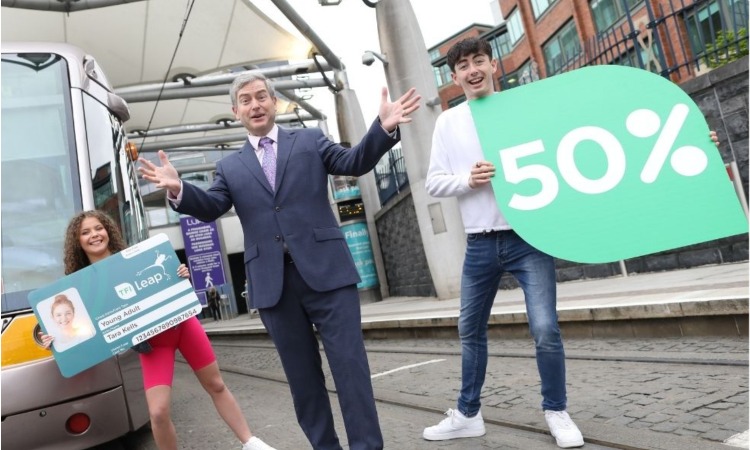

Credit: National Transport Authority
Making fares more affordable
In February 2022, in response to a sharp increase in price inflation across the economy, the Irish government announced a package of measures to mitigate the impacts of increasing cost-of-living expenses and to incentivise a return to public transport.
Part of this package was to introduce a reduction in all fares on subsidised services by an average of 20 per cent, initially until the end of 2022. This included city and urban bus services, the Luas tram, DART and commuter rail services, as well as inter-urban bus and train journeys. This reduction in fares was implemented in April 2022 and was followed by an even more generous fare reduction of 50 per cent in May 2022 for young adults aged 19-23.
There is no doubt that, in the wake of that, there was a notable acceleration of passenger journey growth. In fact, during the 2022 Easter holidays – a time when we usually see a drop-off in passengers – we actually saw an increase.
According to the research, people… are making an additional 2.7 trips per week on average, suggesting that the fares intervention has had a meaningful impact on passenger behaviour”
Recent findings from research commissioned by NTA in relation to the awareness and impact of fares reductions seems to support the premise that passengers are likely to use public transport services more often as a result. Of a sample of 2,500 fare-paying public transport users in July 2022, 69 per cent stated that they were aware of the fare reductions and, from this cohort, 55 per cent stated that this had influenced them to use public transport on a more frequent basis. According to the research, people in that group are making an additional 2.7 trips per week on average, suggesting that the fares intervention has had a meaningful impact on passenger behaviour.
It should probably not come as a surprise that a fare reduction might result in some level of increase in demand, but when looking at the recovery in passenger numbers, fare reductions are only part of the story.
Over the last 18 to 24 months, NTA has accelerated investment in public transport services across the country, primarily through our BusConnects programme in our major urban centres, and our Connecting Ireland programme in rural areas, as well as through programmes of improvement in town-bus services across the country.
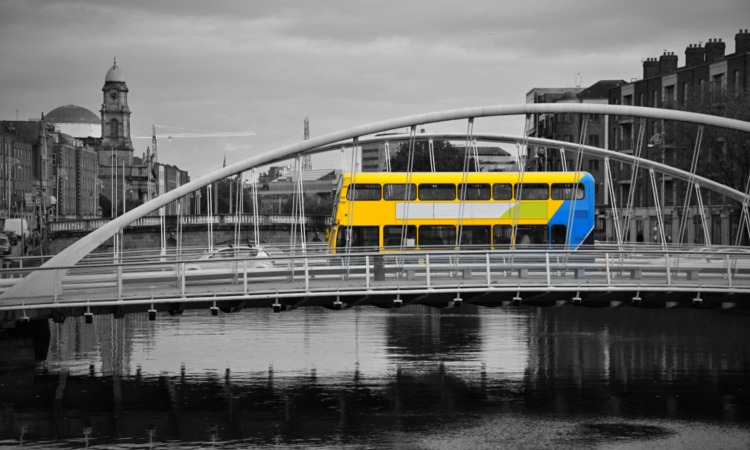

BusConnects Dublin
BusConnects Dublin is a programme of integrated actions, which aims to deliver a system that will enable more people to travel by bus than ever before and allow bus commuting to become a viable and attractive choice”
BusConnects Dublin is a programme of integrated actions, which aims to deliver a system that will enable more people to travel by bus than ever before and allow bus commuting to become a viable and attractive choice for employees, students, shoppers and visitors.
In Dublin, the two major work streams in BusConnects are investment in bus prioritisation infrastructure across the region, under our Core Bus Corridor plans, and the implementation of a brand new bus network in the city and surrounding areas. While work on the infrastructure is at the planning application stage, the new network is already being implemented. Since June 2021, NTA has implemented four of the 11 phases of the new BusConnects Dublin network in partnership with operators Dublin Bus and Go-Ahead Ireland:
- Phase 1 – H-Spine connecting the city centre with suburbs in the northeast city, including Howth, Baldoyle, Portmarnock and Malahide
- Phase 2 – C-Spine Connecting Sandymount in the southeast city to the city centre and suburbs to the west, including Maynooth, Celbridge, Leixlip, Adamstown and Lucan
- Phase 3 – New orbital services N4 and N6 services in the north city, connecting Blanchardstown and the Point; and Finglas and Howth
- Phase 4 – G-Spine connecting the city centre with suburbs in the southwest city including Palmerstown, Ballyfermot and Liffey Valley.
Each of these phases offers communities in those areas overall increased bus frequencies, greater connectivity, departures earlier in the morning and later in the evening and, on some corridors, 24/7 services for the first time ever.
These changes have brought about significant growth in passenger journeys, with Phase 1 seeing a 22 per cent increase and Phase 2 seeing an 11 per cent increase. The figures for Phase 3 are even more encouraging and, although the new N4 and N6 orbital services in northwest Dublin are not an exact like-for-like replacement with the services that were there previously, we estimate that, overall, orbital bus passenger journeys in those areas have doubled since implementation.
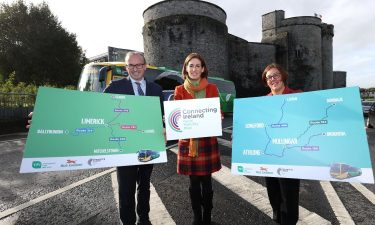

Credit: Bus Éireann
Connecting Ireland
The Connecting Ireland Rural Mobility Plan is a major public transport initiative that has been developed by NTA with the aim of increasing connectivity for people living outside our major cities and towns. The plan aims to improve mobility in rural areas by providing better connections between villages and towns to facilitate access to local services, as well as providing connectivity to an enhanced regional network, connecting cities and regional centres nationwide.
Services to be delivered under Connecting Ireland will be operated primarily by TFI-Local Link Transport Coordination Units at local community level and by state-owned operator Bus Éireann.
TFI Local Link bus services connect communities throughout rural Ireland as part of the Transport for Ireland (TFI) public transport network. They form a network of affordable bus services for everyone who wants to travel to or from local towns and villages.
Since April 2022, as part of Connecting Ireland, we have launched about 40 enhanced Local Link services and an additional eight brand new services serving rural communities in counties such as Clare, Donegal, Galway, Kildare and Offaly.
Public response to these changes has been very positive, with total passenger numbers going from 26,000 per week across the TFI Local Link network in April 2022… to 43,000 per week at the end of October 2022″
On top of that, in partnership with Bus Éireann, we have launched eight new and enhanced services serving rural communities in places like Limerick, Tipperary, Louth, Meath and Cavan.
Public response to these changes has been very positive, with total passenger numbers going from 26,000 per week across the TFI Local Link network in April 2022, when the roll-out of new Connecting Ireland services got under way, to 43,000 per week at the end of October 2022. There is little doubt that our investment in greater service levels is proving to be a significant driver in increasing passenger numbers.
Throughout the remainder of 2022, NTA aims to continue implementing further services across the state, and start the procurement for services to be rolled out in 2023. This rate of improvement of bus services has and will continue to be achieved in a sector facing severe challenges due to increases in the cost of fuel, lack of both vehicle and trained drivers, both of which have been brought about by the recent pandemic and geopolitical events across the world.
This plan will continue to make a difference in the day-to-day lives of more and more people as new and enhanced services are introduced right across rural Ireland.
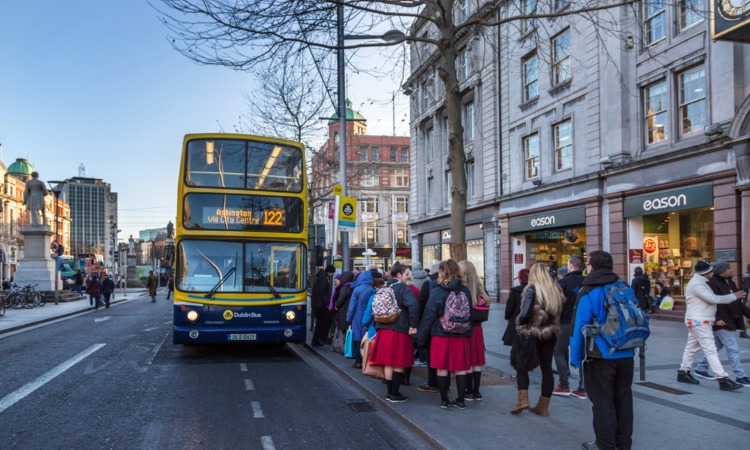

Providing town bus services
NTA has a long-term objective that towns with a population of over 10,000 should have their own town bus service and a shorter-term objective to improve those services already in place”
NTA has a long-term objective that towns with a population of over 10,000 should have their own town bus service and a shorter-term objective to improve those services already in place. Since 2020, we have invested substantially in bus networks in towns such as Drogheda and Navan.
In December 2020, under the Irish government stimulus programme, a range of service enhancements were introduced in Drogheda, County Louth, by NTA. This included the introduction of two new cross-town services operating seven days a week, building on the success of routes D1 and D2 that were already in place. In conjunction with enhancements on the 168 that serves Drogheda’s northern hinterlands, patronage on the enhanced Drogheda services have more than doubled compared to pre-pandemic patronage.
At the same time, in Navan, County Meath, NTA introduced an enhanced town service. The new service provided for two new cross-town routes (N1 and N2) operating a 30-minute frequency, seven days a week. Since introduction and despite movement restrictions, patronage on the Navan town service has grown significantly, with the service now carrying almost 20,000 passenger trips per period as compared to 4,000 per period pre-pandemic.
Keeping people connected to places across Ireland
The recovery of passenger numbers on subsidised public transport services in Ireland to pre-COVID-19 levels is very much to be welcomed. When evaluating the reasons behind this recovery, we have looked at factors such as the broader economic picture, along with reductions in fares and improvements in services.
When it comes to fares, we have concluded that the reductions that we introduced in April and May 2022 did indeed accelerate the return to public transport. In market research, we asked our customers about it, and they told us that, at a time of widespread cost-of-living increases, the lowering of fares incentivised them to make more journeys on public transport than would otherwise have been the case.
Improving value for money on fares has driven growth recently in customer numbers on public transport but, for the long-term,… investing in better public services will be the most important measure”
We also looked at the range of new and improved services that we had introduced across the country since 2020. This included the BusConnects services in Dublin city, the Connecting Ireland programme in rural communities and other enhancements, including town services. We have seen the positive response by members of the travelling public to this investment, who have flocked back to our subsidised services, especially on our buses.
We now want to build on these success stories by connecting more people in Ireland to more places. To that end, in the coming months and years, we will continue to roll-out new services in our cities, towns and villages so that, when it comes to transport, we can provide sustainable alternatives to more communities than ever before.
Improving value for money on fares has driven growth recently in customer numbers on public transport but, for the long-term and growth, if we are serious about enticing people away from their private cars, investing in better public services will be the most important measure.


If you would like to take part in our ‘Getting passengers back on-board: Transport’s road to recovery’ series, or would like to nominate a colleague to take part, please email: Halimah Haque, Editorial Assistant, Intelligent Transport.
Related topics
Accessibility, COVID-19, Fleet Management & Maintenance, Getting Passengers Back On-Board: Transport's Road to Recovery Series, Mobility Services, Passenger Experience, Public Transport, Ticketing & Payments
Related modes
Bus & Coach
Related cities
Dublin
Related countries
Ireland
Related organisations
Government of Ireland, National Transport Authority (NTA)
Related people
Anne Graham








